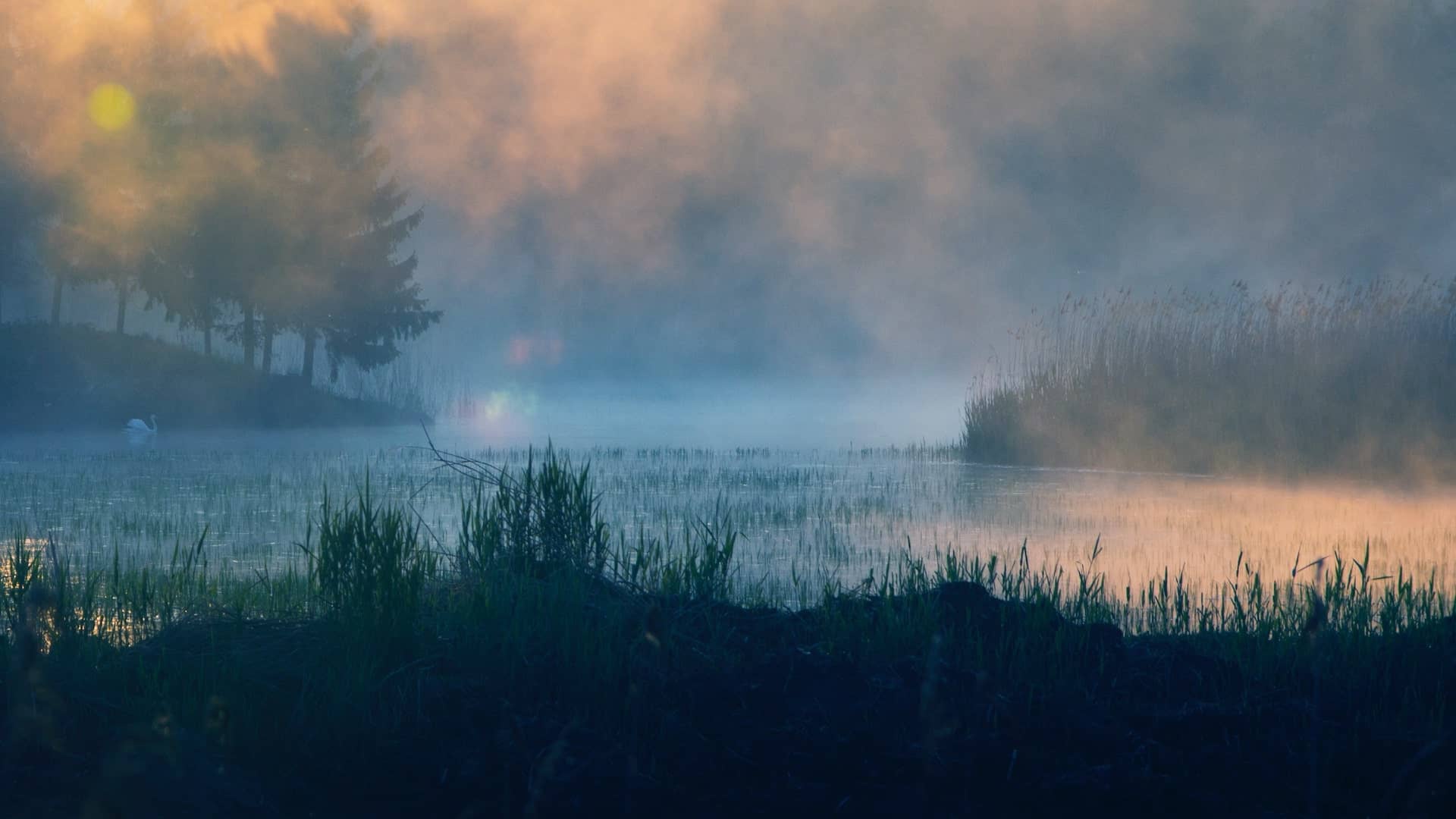



The history
of the Barycz Valley
The Kurzbachs, Hatzfeldts, Maltzans, Reichenbachs, Hochbergs, but also the Gołuchowski, Leszczyński and Radziwiłł families – these are the great families that shaped the history of the Barycz Valley. It traces back, in written sources, to the Piasts lineage.
12th-century documents say that tithes from the left bank of the Barycz river were transferred to the Wrocław bishop curia, and from the right bank – to Gniezno. On the southern banks of the river, there were castellan settlements: Milicz and Żmigród – the first town center (in the 13th century). In the part of Wielkopolska, the settlement in Topola Wielka comes from the early Middle Ages, which was built during the times of Mieszko I as part of the defense system on the Silesian-Greater Poland border.

The capture of the castle in Milicz by the troops of the Czech King John of Luxembourg by the Milicz Reconstruction Group
From small principalities to a kingdom
Part of the Barycz Valley was ruled by the dukes of Głogów and Oleśnica in the 13th and 14th centuries, but both of these Piast lines recognized the sovereignty of the Czech king. On the other hand, the Greater Poland part of the Barycz Valley, in the period of the regional disintegration, passed from the hands of the Greater Poland Piasts to the Silesian Piasts. Eventually, it returned to Greater Poland, which in the 14th century became part of the rebuilt Kingdom of Poland, except for the south-west (today's Sośnie municipality) attached to Silesia. These lands were formally within the borders of the Crown of the Kingdom of Poland when Władysław Jagiełło defeated the ruling prince Władysław Opolczyk.

The tombstone of Zygmunt III von Kurzbach, who died in 1513 – the owner of the first state states, Żmigród and Milicz – located in the church of St. James the Apostle in Prusice
In the Greater Poland part, knightly property dominated at that time. The urban center here was Odolanów, which belonged to the Polish king. It was the seat of the Starosta office, which included ten villages. The town flourished in the 16th century, when mills, forges and breweries were established and developed.
However, it was the Kurzbachs who developed the Barycz Valley economically. They built and enlarged ponds for intensive fish farming, and set up villages by the reservoirs. The lavish lifestyle and the turmoil of war caused such a great impoverishment of this family that its last representative died in a shelter. In the 17th and 18th centuries, new, smaller, free state states were established in Sułów, Cieszków, Nowy Zamek and Goszcz, and other families made a fortune here: Hatzfeldt (Żmigród), Maltzan (Milicz), Reichenbach (Goszcz) and Hochberg (Nowy Zamek – Wierzchowice). They remained in their possession until World War II.
State states in the Barycz Valley
After the extinction of the Piast princes from the Oleśnica line, the Czech king Władysław Jagiellończyk separated the Milicz-Żmigród region from the Principality of Oleśnica and handed it over (in 1492 – Żmigród and in 1494 – Milicz) to his treasurer Zygmunt Kurzbach. As a result, Żmigród and Milicz became independent state states – as the first in Silesia – and were directly subject to the crown.
The shadow of the great war
When the Silesian part of the Barycz Valley belonged to the Kurzbach family, it was part of the Habsburg monarchy as the kings of Bohemia. The Reformation, which spread across Europe and reached Silesia, sparked the Thirty Years' War. It had a religious background, but the Protestant coalition of European countries sought to use it politically, i.e. to weaken the great Catholic Habsburg family. The Barycz Valley, like the whole of Silesia, was under their control, but the Habsburg counter-reformation against the majority of the Protestant population meant that the Prussian king Frederick II the Great, who took Silesia in 1740, was warmly welcomed by local families in the Barycz Valley.

Portrait of 24-year-old Frederick II the Great, later King of Prussia, who visited the Barycz Valley as a young man

Rafał Gołuchowski, founder of the Przygodzice estate. Detail of the painting Madonna “ab Igne”. Collegiate church of the Assumption of the Blessed Virgin Mary in Kalisz.
The history of the Greater Poland part of the Barycz Valley was different. From the 15th century, its development was influenced by Polish noble families. The Przygodzice estate was started by the Gołuchowski family, and continued by their relatives, the Leszczyński family. The estate included the city of Ostrów, 15 villages and uninhabited areas of land. Rafał Leszczyński sold over a dozen villages in them and modernized agriculture, forestry and carp breeding.

Dorota Henryka Przebendowska – she contributed the Przygodzice land to the Radziwiłł family as a dowry. Wobe M. F., Leybowicz H., “Icones familiae ducalis Radivilianae”, 1758

Jan Mikołaj Radziwiłł. Wobe M. F., Leybowicz H., “Icones familiae ducalis Radivilianae”, 1758
From Żmigród to Waterloo

Living room in the palace in Żmigród – most likely an anti-Napoleonic military agreement was signed here – the Żmigród protocol
Żmigród left its special mark in European history. It was here that in July 1813, among others, Tsar Alexander, King of Prussia Frederick William III, Grand Duke Constantine and Field Marshal Mikhail Kutuzow met. During this meeting, an anti-Napoleonic coalition was formed at the Żmigród castle, and the arrangements were written down as the so-called Żmigród protocol. Thus, it can be said that it was in Żmigród that Napoleon's Waterloo began.

Antoni Henryk Radziwiłł, owner of the Przygodzice estate, governor of the Grand Principality of Poznań, lithograph by L. Simon
Since the partition of the Polish- -Lithuanian Commonwealth, the Barycz Valley was under the rule of Prussia, and then Germany, but its Greater Poland part was briefly part of the Principality of Warsaw established by Napoleon (1807-1815). After the Congress of estate became the Przygodzicki County, and in 1873 another Radziwiłł ordinance, and it remained so until 1939.

Grand Duke Konstanty

Frederick William III

Tsar Alexander I
MP Ferdynand Radziwiłł in the Reichstag and in the Sejm
Throughout the whole period of the partitions, the Greater Poland part of the Barycz Valley was a mainstay of Polishness. In the German Reichstag in the years 1874-1918, Poles were represented by Prince Ferdynand Radziwiłł (1834-1926).

Ferdynand Radziwiłł, owner of the Przygodzice estate, representative of Poles in the Reichstag from 1874
After regaining independence, as a senior marshal, he opened the Legislative Seym in the Second Polish Republic.
In 1918, when the Greater Poland Uprising broke out, volunteers from the area of Barycz took part in it en masse. The first to fall was 19-year-old Jan Mertka from Przygodzice.

Flag of the Greater Poland Uprising

Insurgent fights at Chachalnia near Zduny
Also, a significant part of the population of the Silesian part of the Barycz Valley still used the Polish language. The common use of the Polish language here influenced the fact that the present municipality Sośnie, was incorporated into the Second Polish Republic in 1920, to which the Greater Poland part of the Valley had already entered in 1919.

Jan Mertka from Przygodzice
In January 1945, the lands of the Barycz Valley were seized without any major fights. Most of the German inhabitants fled before the advent of the front. The rest was displaced. Their place was taken by Polish settlers from Greater Poland and the ones expelled from the eastern Borderlands of the Second Polish Republic.
In 1999, the area was administratively divided between two voivodeships: Dolny Śląsk and Wielkopolska. However, in the Barycz Valley, nature connects these two provinces.
Joint activities for the brand of the area and the preservation of valuable natural areas connect people, organizations and local governments today in the form of partnerships across borders.
see you
in the Barycz Valley
